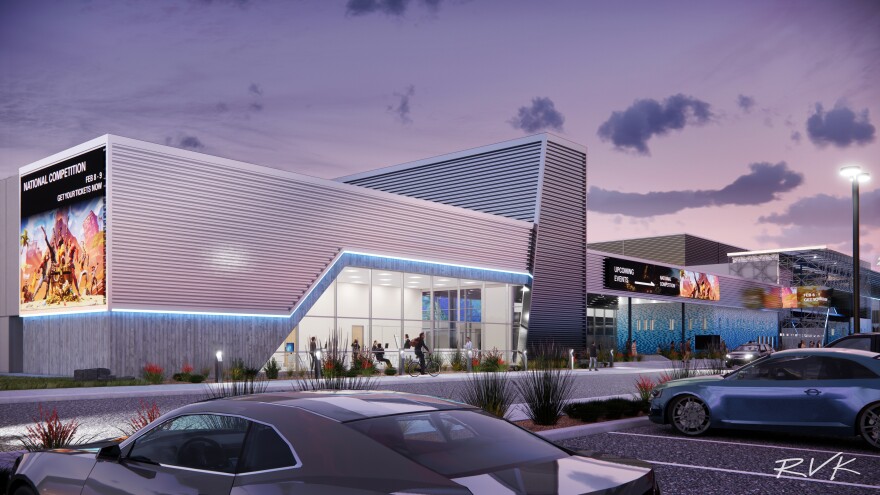A $60 million project southwest of downtown San Antonio wants to revolutionize e-gaming and drive residents — especially kids — into careers in science and technology. After more than two years, the walls are going up at Port San Antonio’s Innovation Center, also called the Tech Port Center and Arena.
Port San Antonio — home of much of the city’s cybersecurity and aerospace industry — has been building the temple to the gaming industry, as well as science and technology, to bring more people to its 1,900-acre campus, which hosts more than 10,000 employees.
The port has added hundreds of thousands of square feet of facility space since 2017, the largest expansion to its footprint in decades. Despite the additions, there’s nothing like the Tech Port Center in that area, or in the region.
“I think the excitement level is through the roof,” said Will Garrett, vice president of cybersecurity development for Port San Antonio.
The 130,000-square-foot facility will host a science and technology museum, a 2,500-seat arena for esports competitions, meetings space and fabrication labs. You can find all of these things out there individually, but not all in one.

“But the uniqueness of this is all of those components and as synergistically built into a single facility with an underlying focus on connecting talent and technology to opportunities,” he said.
While the facility will offer meeting and lab space that could be used for conferences and large gatherings for corporate clients — the larger goal is to an extent ride the popularity of the foot-traffic focused museum of the San Antonio Museum of Science and Technology and the esports arena to entice people into jobs in STEM fields.
“The underlying foundation of this facility is how do we then take that talent and those bright minds and connect them, and show them what the career path may be with a company on this campus or not — whether an education or training route may be and connect them up with an academic partner,” said Garrett.
The strategy of using esports popularity to push kids in educational and career paths is catching on with universities across the country forming esports teams, some that offer scholarships.
“I really feel like it's going to be hallowed ground for people. Because this is an opportunity to change the trajectory of kids’ lives,” said Sam Elizondo founder of the Esports in Education foundation — a recently formed San Antonio nonprofit that hosts competitions and gives scholarship money to students.
Elizondo said the facility and the growth in esports would have helped him as a student, as someone who didn’t connect with the traditional academic pathways. He also owns LFG Cybercafe.
The esports facility will be a big step forward for hosting competitions in the city which has been limited by space and connectivity costs at venues. His foundation hosted its first competition in February with teams from eight universities attending (online) including UT Austin, UTSA and Trinity University. Another is scheduled with support from Port San Antonio in June. They hope to give away $2,500 in academic scholarships.
When asked if it was surprising that the effort would be led by a redevelopment authority on a former Air Force base in an economically disadvantaged part of town, he said simply, “no.”
“I would actually argue that it's truer to the form of grassroots esports than anything else,” said Elizondo.
Esports is huge now. It is expected to have a nearly 500 million person global audience this year, and it’s seen massive influxes of venture capital, billions of dollars since 2017.
The latest trends of NBA stars purchasing esports interests and arenas being financed by “heavy handed” investors as esports becomes more professional is in some way the antithesis of how it all started.
“Before it was in the mouths of professional basketball players, before people were talking about it on TV, it had always been done in the most seemingly most random locations, completely driven by just people that loved what it was... you were popping up events in laundry mats at bars, you know, Quinceñera (or) wedding venues. Anywhere that you can find enough place with a decent enough internet to connect, you know, that's, that's how it's always been,” he said
Put another way — esports had a punk rock aesthetic. While the $60 million facility isn’t punk rock, the part of town it’s in, the idea of it being a little off the beaten track and the fact that it is an old military base are.
The building is expected to be completed in less than a year.
TPR was founded by and is supported by our community. If you value our commitment to the highest standards of responsible journalism and are able to do so, please consider making your gift of support today.

